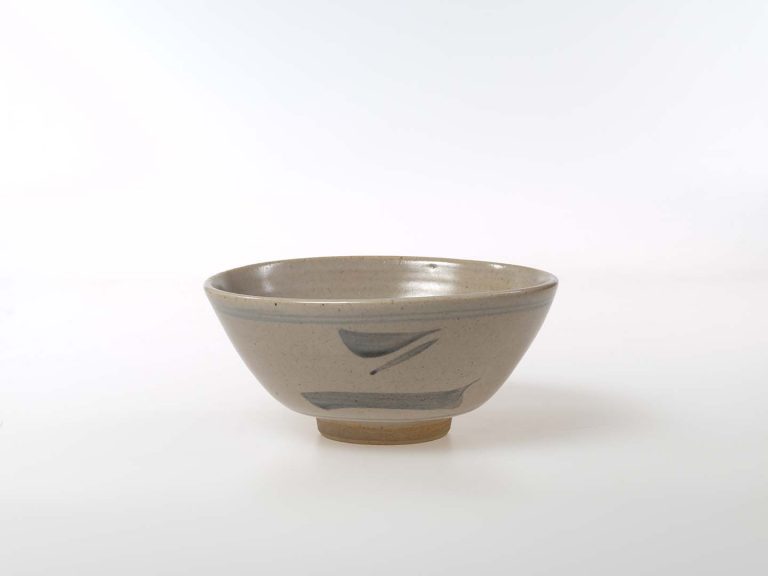We acknowledge the Traditional Owners of the land on which the Queensland Art Gallery | Gallery of Modern Art stands and recognise the creative contribution First Australians make to the art and culture of this country.

Bernard Leach / England 1887–1979 / Bowl c.1939 / Stoneware, thrown with grey celadon glaze and brush decoration / 10 x 22cm (diam) / Gift of Mrs Dorothy Williamson 1958 / Collection: Queensland Art Gallery | Gallery of Modern Art
Bernard LeachBowl c.1949
Not Currently on Display
This bowl is from Leach Pottery’s highly influential ‘Standard Ware’ range that was developed shortly before World War Two.
Bernard Leach and his son David worked together on the prototypes for a number of forms — primarily bowls, plates, jugs, mugs and coffee pots — which were made with three basic glazes: a dark tenmoku, a celadon and an oatmeal with simple painting in blue and brown. While the range has been modified over the years, it has become the standard by which other domestic ware potters are judged, and it is celebrated for its hand-made feel, practicality and ease of production.
The ware was made by a team of potters, with David as manager, William Marshall as foreman, and Bernard as chief quality controller. Everyone would take their share of decorating, and Bernard Leach’s distinctive hand may be recognised on some pieces.1
Endnotes:
1. Oliver Watson, British Studio Pottery: The Victoria and Albert Museum Collection, Phaidon Christie’s in association with the Victoria and Albert Museum, Oxford, 1990, p.208.
Leach Pottery, founded in 1920 by Bernard Leach and Shoji Hamada, is among the most respected and influential potteries in the world.
One of the great triumphs of the Leach Pottery was the ‘Standard Ware’ range. This was not developed until just before the war, when the first mail-order catalogue was issued, and it grew into a considerable undertaking in the 1950s and 1960s. Bernard Leach, rather against his natural instincts, had resorted to making cheap earthenwares for everyday use in the 1920s and early 1930s.
However, it was the needs of the Dartington Community, where Leach became involved in 1932, which pushed him to plan seriously for a production pottery of useful wares. He found support for this activity in the ideas of the ‘mingei’ movement in Japan which had over the 1920s developed the belief that the anonymous craftsman producing repetition ware unselfconsciously for a community market was the basis of all that was beautiful and noble in art.1
Endnotes:
1. Oliver Watson, British Studio Pottery: The Victoria and Albert Museum Collection, Phaidon Christie’s in association with the Victoria and Albert Museum, Oxford, 1990, p.208.